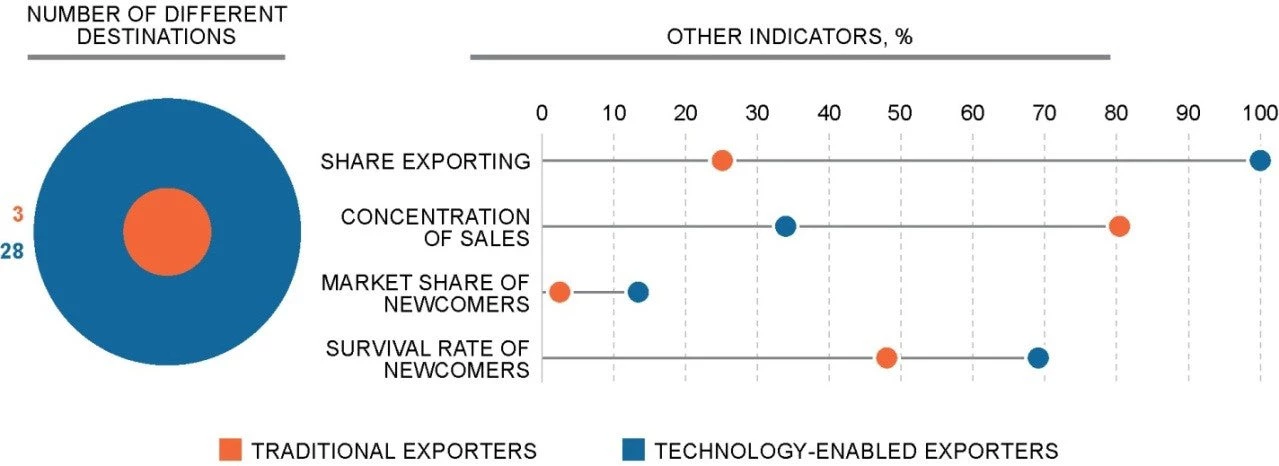In Jordan, for example, the use of ICT and digital technologies affects firms’ export performance across multiple dimensions (figure 1) – share of exports, sales, market share and survival. This trend can be seen in other developing countries as well, including Chile, India, Indonesia, Peru, South Africa, Thailand and Ukraine.

Yet, as the 2016 World Development Report Digital Dividends highlights, despite the many individual success stories and the rapid spread of digital technologies, aggregate effects on development, growth, jobs, and services of low-income developing countries (LIDCs) is lagging. The lack of ICT capacity and access is often most evident in limiting the opportunities of small- and medium-enterprises (SMEs), as illustrated in the World Bank-OECD report Inclusive GVCs.
Improving access to digital networks is of particular importance. Not only do these technologies and networks enhance productivity and strengthen firms’ access to global markets, they also mobilize tremendous resources. With US$234 billion in revenue in 2015, Apple would have been the 45th strongest economy in the world, slotting in between the comparable GDPs of Greece and Portugal. But equally as important, Apple is the central node in a global network of goods and services suppliers. Applying Network Theory to GVCs, it becomes clear that ICT and ICT-enabled services are at the core of production networks and often located upstream in the production process, allowing those firms to capture greater value (Santoni and Taglioni, 2015).
In effect, by not being able to connect through ICT, SMEs and larger firms in LIDCs are stuck on the periphery of international trade networks and GVCs.
To effectively leverage the digital economy for promoting a country’s competitiveness in global markets and in GVCs, changes need to be made to what the WDR calls the analog complements to digital technologies. The reality is that, although considerable progress has been made in strengthening access of emerging and developing economies to communications infrastructure, being connected is only the first step. Connecting competitively to the world economy and allowing more efficient access to the global pool of resources require both investment in hard and soft infrastructures and policies to ensure access to ICT and ICT-enabled services at competitive prices. Improvements in these areas will reduce firms’ transaction costs and increase access to digital trade.
And developing countries can compete in this space, as the success of disruptive digital platforms like m-Pesa launched in Kenya and Alibaba founded in China has shown. Entrepreneurs can—with the right support frameworks in place—scale up innovation and plug into global markets like never before. New digitally-enabled tools can help overcome a lack of local resources and infrastructure, tapping into the opportunities of cloud computing, e-commerce, computer-aided machinery, and artificial intelligence to open both lower cost and higher value avenues to global trade.
The World Bank Group and other multilateral organizations can do their part in reducing costs and increasing access to digital trade by:
- Identifying digital economy opportunities in export markets and in GVCs;
- working with clients to improve the efficiency and regulatory clarity in ICT and ICT-enabled services and to facilitate the use of digital payment systems and the cross-border transfer of data and money;
- fostering investment in digital literacy and entrepreneurship skills;
- and supporting the establishment or scaling up of electronic platforms that support entrepreneurship and the diffusion of knowledge.



Join the Conversation